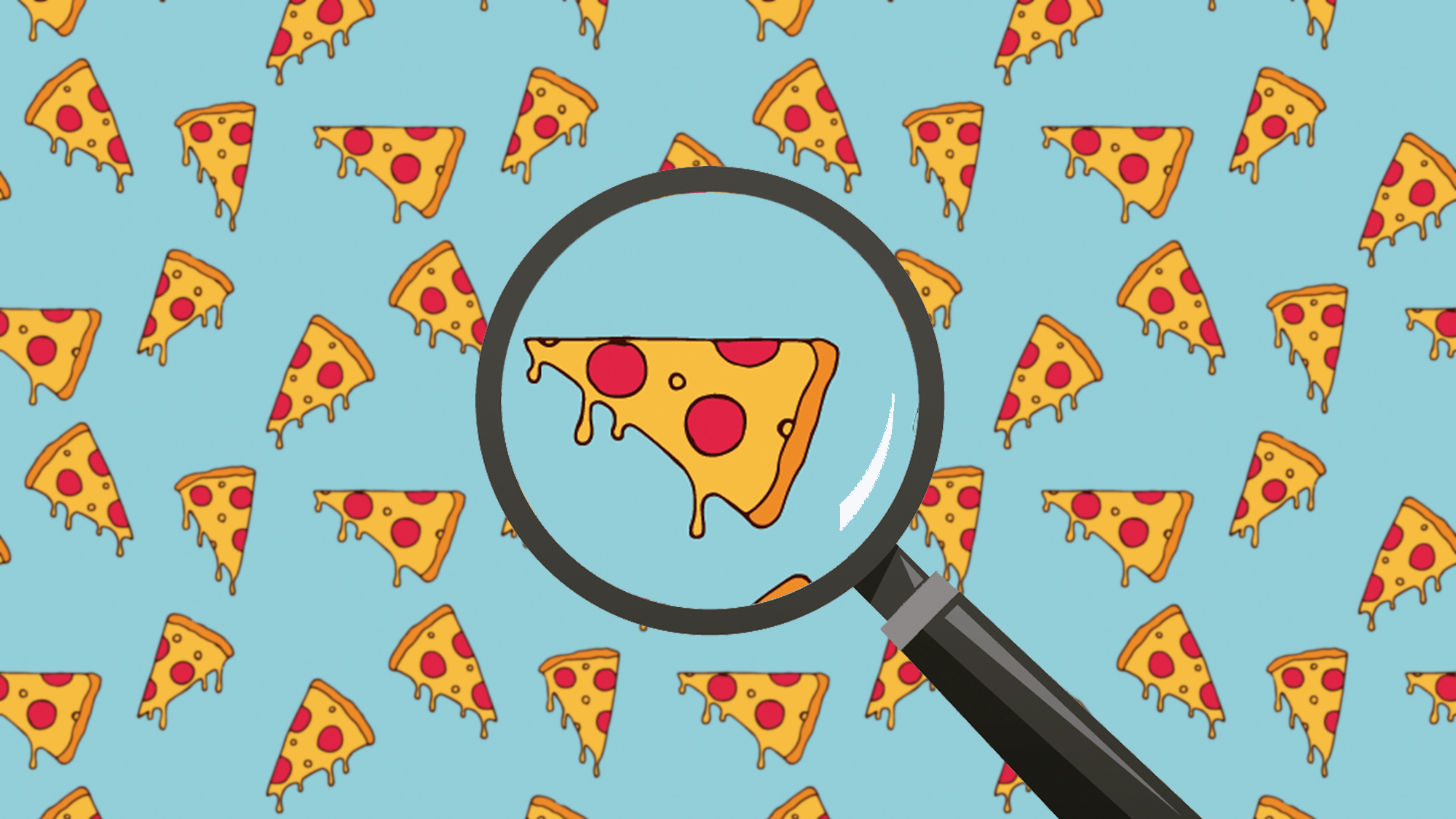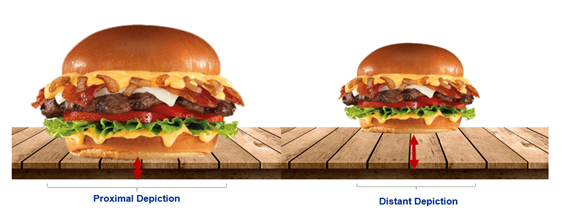One minute, you’re minding your own business, content and flipping through a magazine, or perhaps you are riding a bus and looking out the window – and then, suddenly, for some reason, you are filled with an insatiable craving, an inexplicable need to…. eat pizza. You didn’t even realize you were hungry, and the truth is, you probably weren’t but your eyes happened to cross over an up-and-close picture of a hot pizza dripping with cheese. That is what’s called the “proximal depiction effect” of indulgent foods such as burgers, fries, pasta, and ice cream.
Apicius, the famed 1st-century Roman connoisseur, purportedly said: “We eat first with our eyes.” This phrase rings true now more than ever, but perhaps in a way that Apicius did not entirely foresee. Today, pictures of food beckon us through advertising, restaurant menus, product packaging, billboards, online food ordering websites, and social media. And they are specifically designed to whet the appetite.
Merely viewing pictures of an indulgent food can elicit taste inferences, trigger consumption intentions, and stimulate the expected enjoyment of the featured food. Research from Ryan Elder of Brigham Young University and Aradhna Krishna from University Michigan shows that even subtle manipulations in advertising, such as orienting a product towards a viewer’s dominant hand, can evoke a mentally simulated experience that can lead the viewer to actually interact with the product.
In addition, perceived proximity to food in advertising plays a significant role in activating those tastebuds. With my IE Business School colleagues, Sumit Malik and Kriti Jain, we examined how the spatial distance of a pictured food in an advertisement (including, for example, an online ordering platform) affected users’ expectation of the food. What we found is that people spontaneously expect food to be tastier when they are displayed up close. Proximal depictions bring a food product spatially closer to a consumer without their changing bodily position and such depictions make the food visually evocative and perceived as tastier. To that point, proximal food pictures of indulgent foods are more implicitly associated with tastiness than their non-indulgent counterparts.
This enhanced perceived tastiness leads consumers to purchase indulgent foods upon a single exposure. However, while people expect higher tastiness when briefly exposed to such proximal pictures, an increased number of proximal indulgent food pictures (e.g. on the menu board) may lead to an opposite effect: the viewer becomes satiated by the images and the enjoyment and tastiness they anticipate from the food actually go down. For example, if someone observes many proximally depicted burger photos while making an online order, they may very well end up ordering a pizza (or go so far as to order a salad) due to the decline in the enjoyment they expect from eating a burger.
Proximal depiction effect occurs because proximal pictures get associated over time with tastiness, through self-experience, observation, and repeated co-occurrence – depending, of course, on the type of pictured food. According to Andrew Karpinski of Temple University and James Hilton of University of Michigan, stronger associations may occur because of high levels of exposure to and awareness of certain phenomena in a person’s environment. Accordingly, the association of tastiness with proximal pictures of indulgent vs. non-indulgent food would be stronger, as consumers are more exposed to proximally depicted indulgent foods.
The way food is depicted in advertisements plays a crucial role in consumer response.
It is estimated that, on average, consumers observe more than 5,000 advertisements every day with an increasing proportion featuring food products. In 2019, McDonald’s spent $1.62bn and Yum Brands (comprising Taco Bell, Pizza Hut and KFC) another $1.07bn on advertising within the United States. Furthermore, the global online food delivery market is estimated to grow in revenue from $343.80bn in 2022 to $474.30bn by 2026 at a compound annual growth rate of 8.38%. These advertisements typically highlight the sensorial appeal (i.e., tastiness) of food products through evocative imagery. Therefore, the association of tastiness gets strengthened every time a consumer encounters a proximal depiction of indulgent food as each exposure would bring to the consumer’s mind exemplars of taste-inducing products and advertisement visuals encountered over time. Contrarily, pictures of non-indulgent foods such as fruit salad, lettuce, and broccoli are associated with lack of taste, less fulfillment, and lightness, and not as frequently featured in advertisements, limiting their association with proximal food depiction.
The way food is depicted in advertisements plays a crucial role in consumer response. As mentioned, while a proximal depiction of indulgent foods may initially elicit a strong response, repeated exposures can diminish the sensory enjoyment for a pleasurable experience. It’s important to note that we are not talking about being physically satiated by food in our bellies but by the images and prospect of such food. This satiation may also be experienced thanks to other external food cues such as labels, color, and shape, which make the composition and quantity of the product salient.
So, what does this mean for companies and advertisers looking to get consumers to buy their tasty foods? It’s important for such businesses to be mindful of the proximity and frequency of indulgent food depictions in their advertising and marketing efforts, as these factors can impact a person’s enjoyment and satisfaction with their products.
Furthermore, the question arises as to what responsibility such companies and advertisers hold in regards to the consumption of indulgent foods, foods that are not necessarily known for their health benefits. Viewing indulgent food pictures in close proximity leads to increased consumption, regardless of factors such as body mass index, dietary preferences, age, and gender. This, therefore, has a direct health effect on people around the world. For example, and unfortunately, the traditional Mediterranean diet, a way of life in Southern Europe, is slowly being replaced by a fast-food diet and the consumption of more ready-to-eat foods, resulting in negative health consequences such as increased rates of overweight, diabetes, high blood pressure, and obesity.
In order to address this issue of overconsumption caused by proximal indulgent food pictures, policymakers could consider implementing regulations that restrict the proximal depiction of indulgent or unhealthy foods and create awareness among consumers about the potential impact of such pictures. Meanwhile, large food companies can take a proactive approach by voluntarily designing advertisements that feature more non-indulgent foods in a proximal manner.
© IE Insights.








